Squash vs zucchini…are they actually different? Get to know the delightful differences between zucchini and squash in our guide that’ll have you mastering these versatile summer squash in no time.
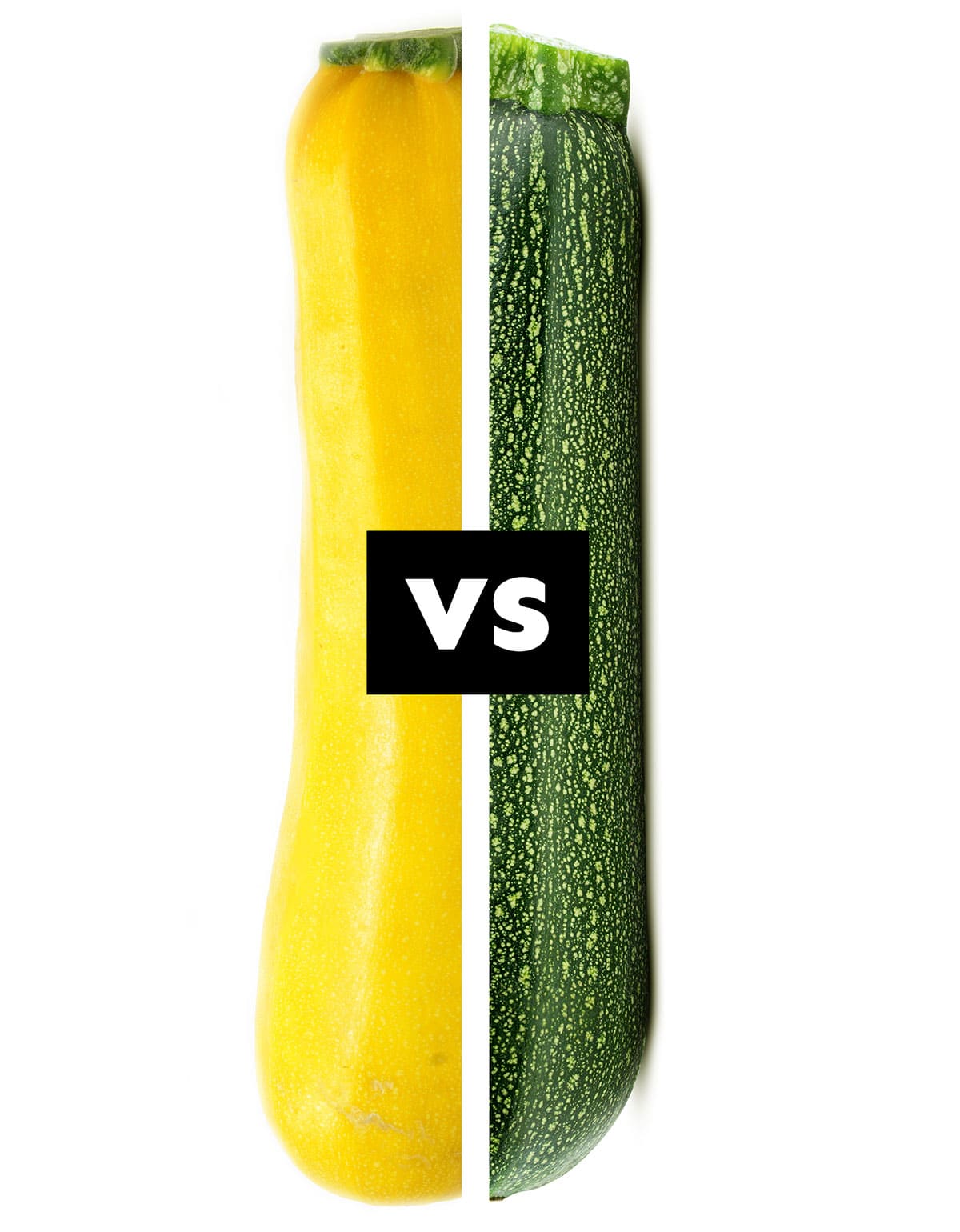
What’s the Difference between Squash and Zucchini?
When it comes to summer vegetables, two popular choices are yellow squash and zucchini. These versatile vegetables are often used in a variety of dishes, but how do they differ? They are generally side by side in the grocery store, and often at the same price.
We should state right up front: all zucchini are squash, but not all squash are zucchini. Specifically zucchini is a summer squash (as is the yellow squash). If you want to explore other varieties of squash, to include both summer and winter squash, check out our 50 Types of Squash. Our comprehensive guide (with photos) breaks it all down on America’s favorite squash and a few unusual and rare varieties as well.
And, yes zucchini and yellow squash are both botanically classified as fruits. We use them both, however, more like vegetables, so we will stick with that classification. If you want to be further mystified, zucchini are actually botanically classified as berries!
For the purposes of this article, we’re exploring the difference between yellow squash and zucchini!
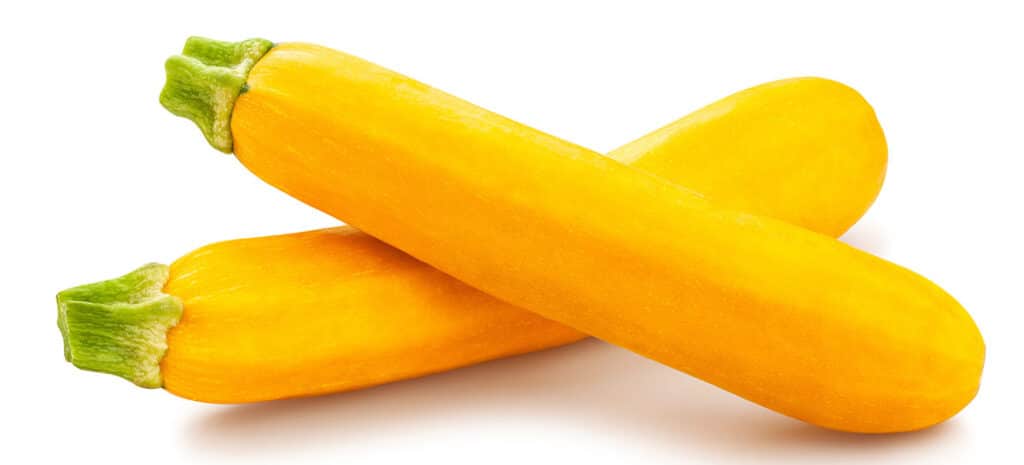
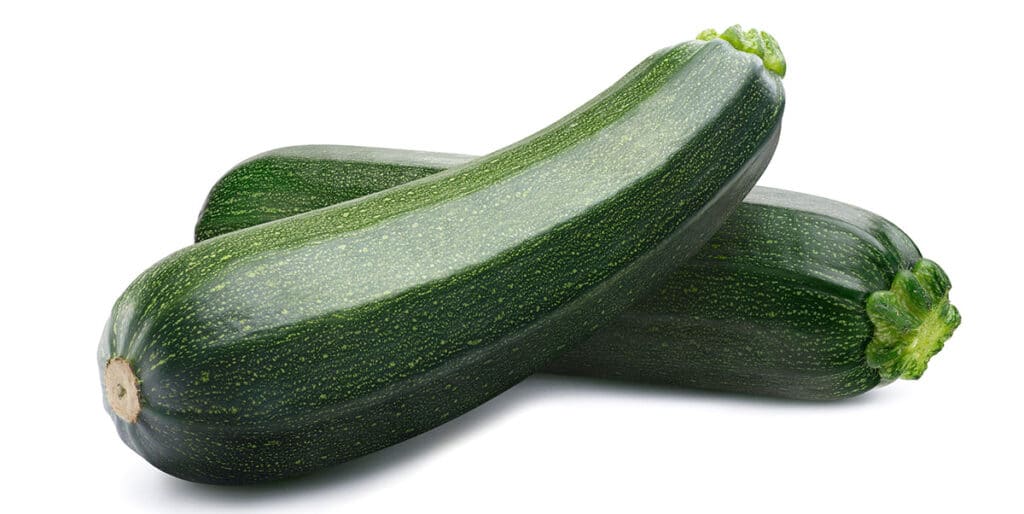
Appearance
One of the most apparent differences between yellow squash and zucchini lies in their physical appearance.
Color: Yellow squash, as the na me suggests, has a vibrant yellow color, smooth skin, and a slightly bulbous bottom end. On the other hand, zucchini tends to be a darker shade of green, featuring a uniform cylindrical shape with a tapering end.
Skin: Both vegetables have edible skin and soft, tender flesh. This is a key feature that differentiates summer squash from winter squash. The skin on summer squash is generally edible, no need to peel. Winter squash have a much tougher skin.
Size: Yellow squash and zucchini tend to be about the same size. Once you select either zucchini or yellow squash, look for those that are about 7-8” long and ideally 8-12 ounces. Up to 24 ounces is often fine, but we don’t generally go higher than about 16 ounces. Both vegetables will grow quite large if allowed to do so. The problem is that the skin gets harder and the seeds get larger the bigger they grow.
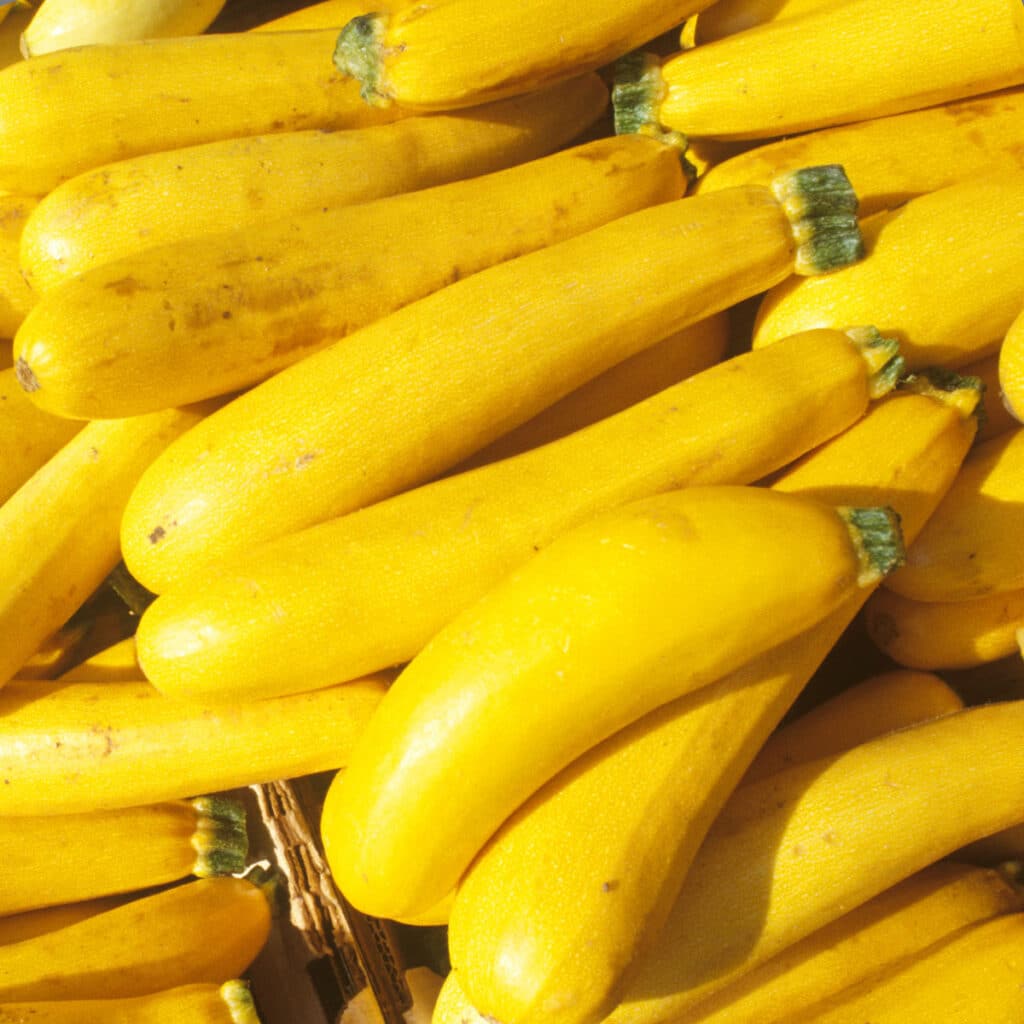
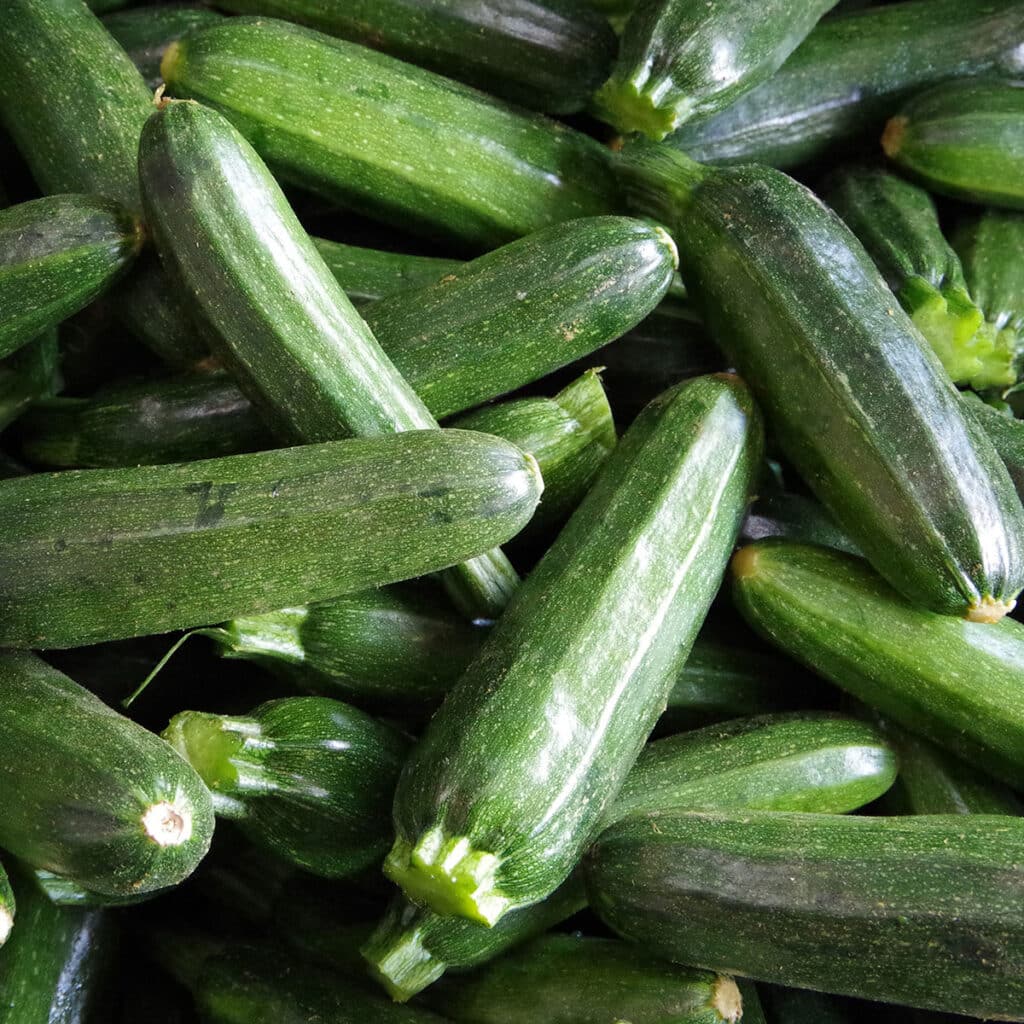
Taste
While yellow squash and zucchini belong to the same family, their taste profiles do differ slightly.
Yellow squash tends to have a milder, sweeter flavor compared to zucchini. The taste of yellow squash is often described as buttery and delicate.
Zucchini has a slightly earthy and more pronounced flavor. It is worth noting, however, that the taste can vary depending on the cooking method and the specific variety of squash or zucchini being used (there are at least 15 varieties of zucchini).
Generally we consider the two interchangeable in cooking. We know chef’s and dedicated cooking enthusiasts will disagree, but for most recipes that call for one the other you can use them interchangeably.
Smell
In terms of aroma, yellow squash and zucchini have subtle differences. When sliced or cooked, yellow squash emit a pleasant, sweet fragrance. It has a somewhat floral scent that some describe as reminiscent of summer. On the other hand, zucchini has a milder and slightly grassy smell. The aromatic differences, although subtle, can contribute to the overall sensory experience of cooking and enjoying these vegetables.
Cooking
Yellow squash and zucchini are incredibly versatile vegetables that can be used in various culinary preparations. They can be eaten raw, thinly sliced and added to salads, or used as a crunchy element in slaws. Both vegetables are excellent for sautéing, grilling, roasting, or steaming. See all of our zucchini recipes here!
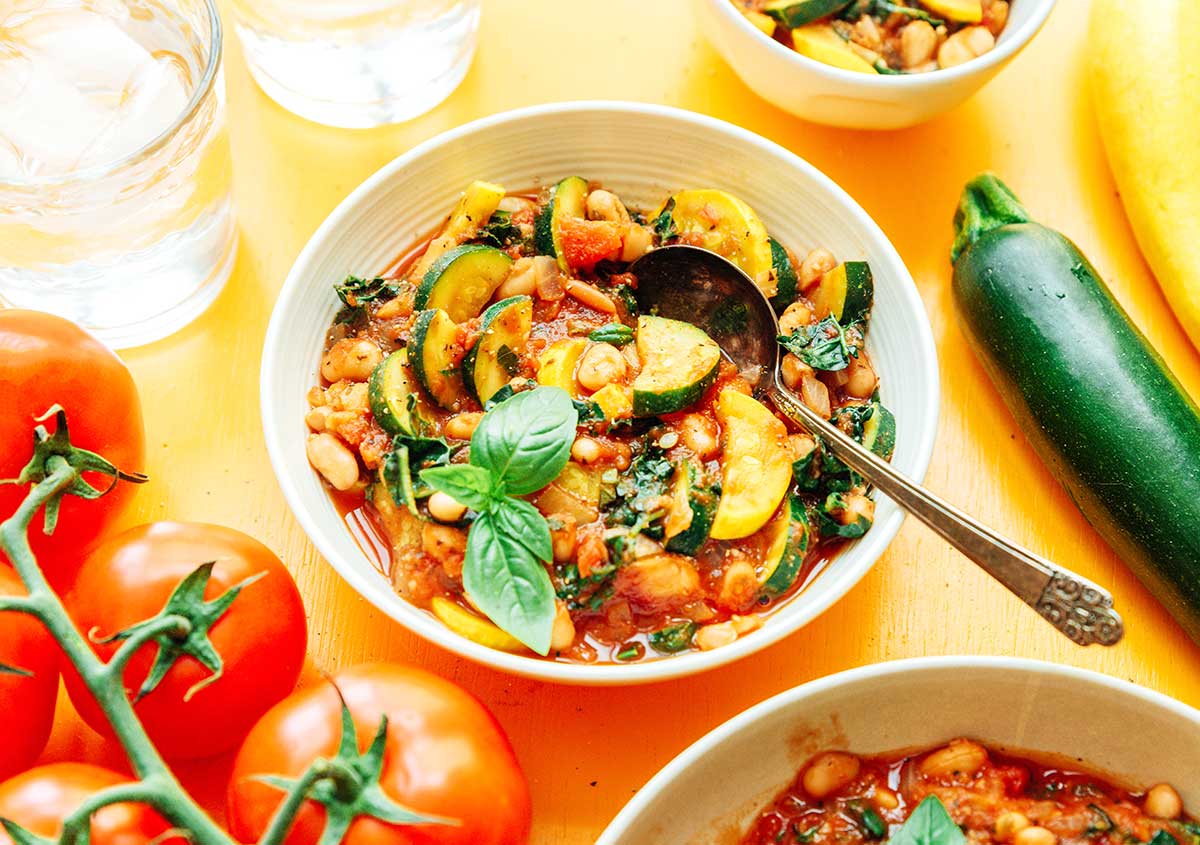
Nutrition
Both yellow squash and zucchini are healthy and extremely low-calorie vegetables that offer numerous health benefits. They are excellent sources of dietary fiber, vitamins A and C, and minerals like potassium and manganese. These vegetables are also known for their high water content, which can help keep you hydrated.
One notable distinction between yellow squash and zucchini, however, is their carotenoid content. Yellow squash contains more carotenoids, which are beneficial antioxidants that give the vegetable its vibrant color.
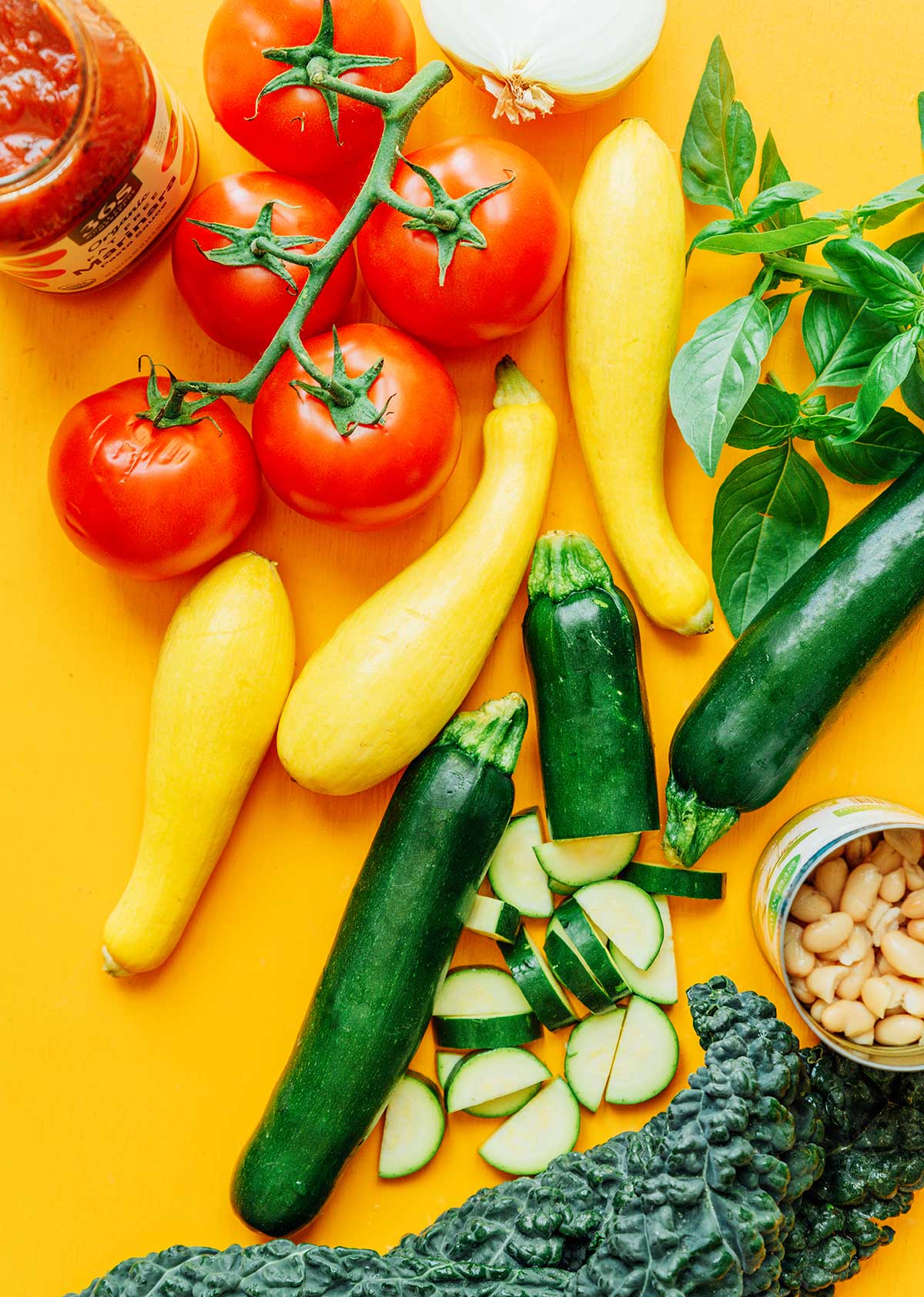
Zucchini and Yellow Squash Nutrition Chart
The chart below shows nutrition info for both 1 medium zucchini and 1 medium yellow squash.
| Zucchini | Yellow Squash | |
|---|---|---|
| Calories | 36 | 35 |
| Carbs (g) | 7.2 | 7.2 |
| Protein (g) | 2.8 | 2.6 |
| Fiber (g) | 2.4 | 2.4 |
| Vitamin C (% RDA) | 64% | 41% |
| Vitamin A (% RDA) | 10% | 2% |
| Iron (% RDA) | 10% | 4% |
| Calcium (% RDA) | 20% | 2% |
| Potassium (% RDA) | 12% | 12% |
Is Zucchini Keto Friendly?
Yes, according to the USDA, an 8 ounce zucchini only has 4.4 grams of net carbs (net cars are total carbs minus fiber). If consumed in moderation, either zucchini or yellow squash can be worked into a keto or other low carb diet.
In conclusion, while yellow squash and zucchini are more similar than they are different, yellow squash have a slightly sweeter taste, vibrant yellow color, and higher carotenoid content, while zucchini has a more pronounced flavor, dark green color, and a grassy scent.
We hope you found something you can use here, and as always happy cooking!
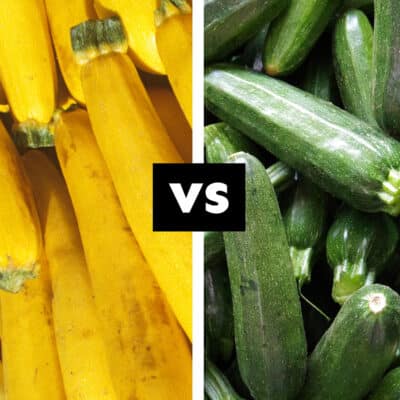
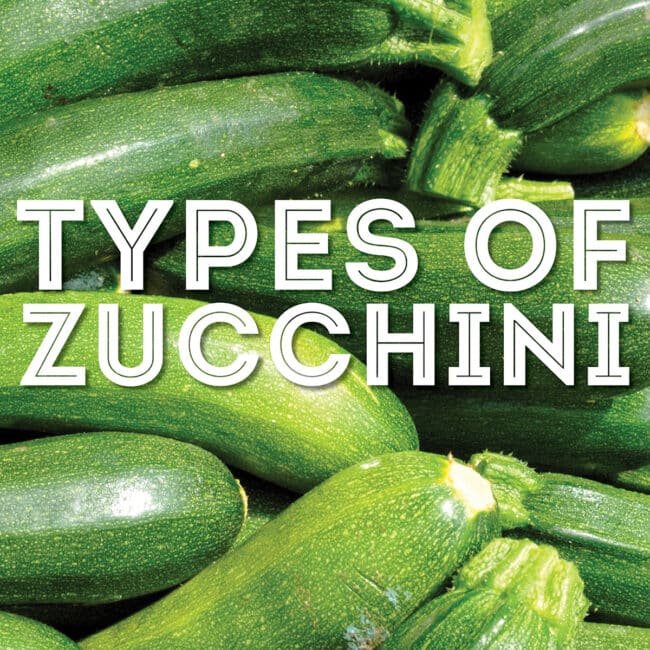
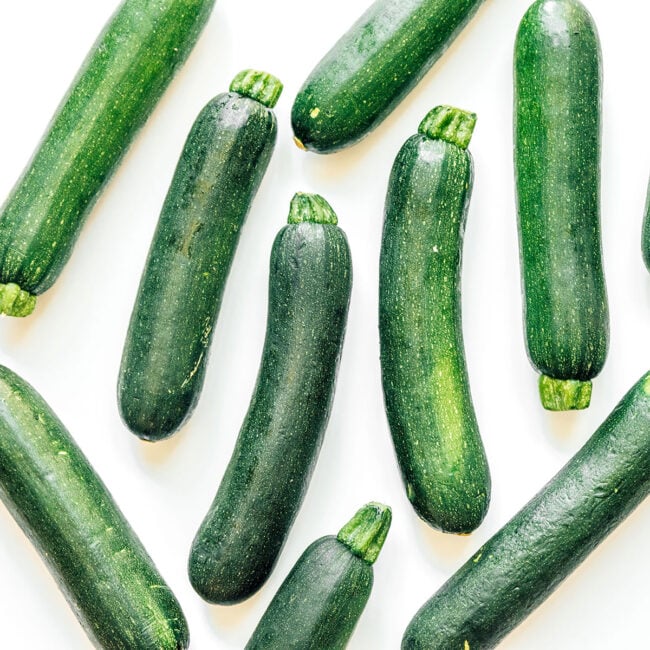
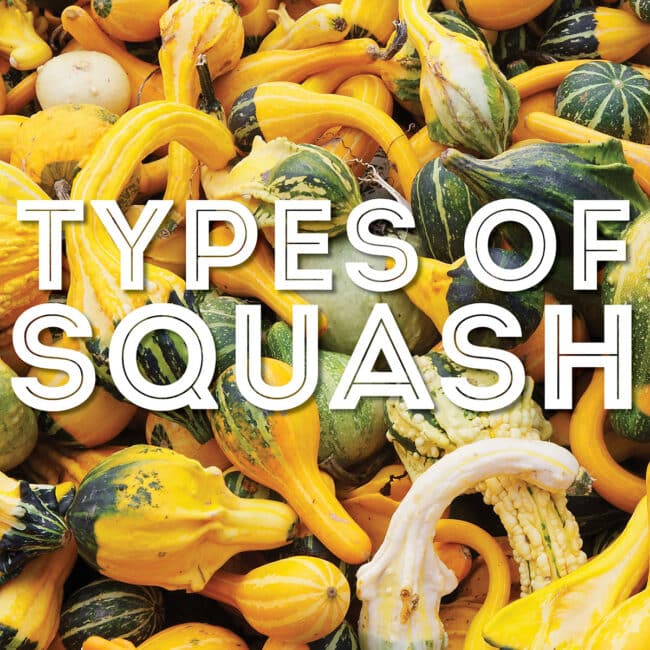
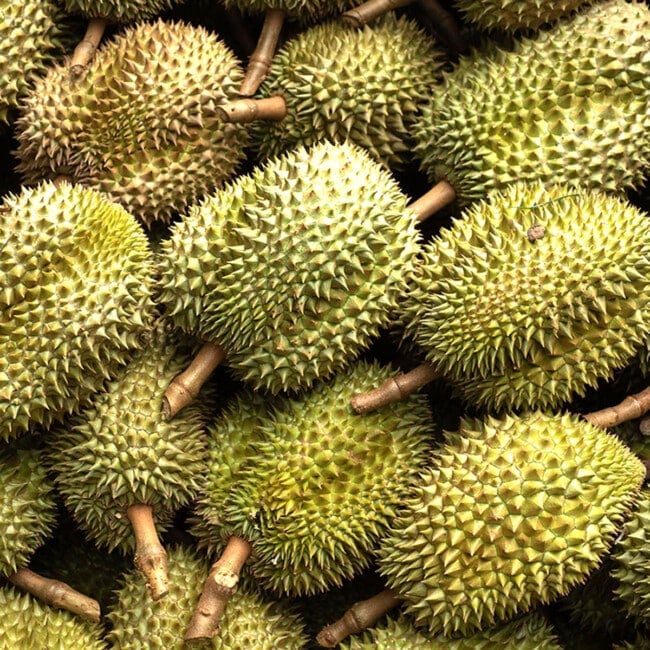
Leave a Comment